Testing indoor air quality has become increasingly crucial in today’s world, yet navigating the process can be daunting. From understanding when to test and what pollutants to consider to grappling with the associated costs, it can feel overwhelming.
In this blog post, I want to help you with essential information on how often you need to test indoor air quality, what factors to consider during testing, and an overview of the associated costs.
Let’s dive into the details to help you make informed decisions about monitoring the air you breathe indoors.
How often should you test indoor air quality?
The frequency of indoor air quality testing varies depending on pollution levels in different locations. Cities with higher pollution levels typically require testing every three months, while semi-urban and rural regions may find testing every six months to a year to be sufficient.
I called a bunch of indoor air quality testing agencies and laboratories across the US and understood that the frequency of indoor air quality testing depends on various factors. I have compiled all the data into a table to make this information as simple as possible.
| Location | Frequency | Type of Pollutants Typically Tested | Recommendations |
|---|---|---|---|
| Urban | Every 3 - 6 months | PM2.5, VOCs, CO2, CO, formaldehyde, humidity | Due to higher levels of traffic emissions, industrial activities, and indoor pollutants in urban areas, it's recommended to conduct indoor air quality tests every 3 months to ensure timely detection of pollutants and maintain a healthy indoor environment. |
| Semi-Urban | Every 6 -9 months | PM2.5, VOCs, CO2, CO, formaldehyde, humidity | Semi-urban areas may experience a mix of urban and rural influences on indoor air quality. Testing every 6 months helps capture any fluctuations in pollutants due to seasonal changes or nearby industrial activities. |
| Rural | Every 6- 12 months | Radon gas, PM2.5, VOCs, CO2, formaldehyde, humidity | While rural areas may have lower levels of outdoor pollutants, they can still be prone to indoor pollutants like radon gas from soil and groundwater. Therefore, it's recommended to conduct indoor air quality tests every 6 months, with a focus on radon testing. |
Most of the air quality testing agencies mentioned that the frequency of indoor air quality testing depends mostly on location and the type of pollutants in the indoor atmosphere.
mentioned that the frequency of indoor air quality testing depends mostly on location and the type of pollutants in the indoor atmosphere.
Indoor air quality testing frequency based on location.
Urban Challenges:
Pollutant Sources in Urban Environments:
In urban areas, pollutants infiltrate indoor spaces from various sources such as vehicular emissions, industrial activities, and construction sites. The proximity to busy roads and factories exposes residents to elevated levels of PM2.5, VOCs, CO2, CO, and formaldehyde, posing significant health risks.
Impact of Densely Populated Areas:
The high population density in urban areas exacerbates indoor air quality challenges. Overcrowded spaces lead to increased human activity and a greater generation of indoor pollutants, making regular testing imperative for early detection and mitigation.
According to the Environmental Protection Agency (EPA) , indoor air pollution is often 2 to 5 times higher than outdoor pollution levels.
, indoor air pollution is often 2 to 5 times higher than outdoor pollution levels.
Necessity for Frequent Testing:
Due to the continuous influx of pollutants and the fast-paced urban lifestyle, indoor air quality can deteriorate rapidly.
Therefore, testing every 3 months is recommended to promptly identify any emerging issues and implement corrective measures to maintain a healthy indoor environment.
Navigating Semi-Urban Spaces:
Balancing Urban and Rural Influences:
Semi-urban areas experience a unique blend of urban and rural influences, which can affect indoor air quality.
While they may benefit from less traffic congestion and industrial pollution compared to urban centers, semi-urban spaces are still susceptible to fluctuations in pollutant levels due to seasonal changes and sporadic industrial activities.
Addressing Seasonal Variations:
The transition between urban and rural landscapes in semi-urban areas can result in seasonal fluctuations in indoor air quality.
For example, agricultural activities during certain seasons may increase the presence of outdoor pollutants indoors. Therefore, testing every 6 months allows homeowners to monitor these variations and adapt accordingly.
Finding the Right Balance:
Choosing the optimal testing frequency is essential for semi-urban residents to strike a balance between monitoring indoor air quality effectively and avoiding unnecessary testing.
Testing every 6 months provides a comprehensive overview of indoor air quality trends without overwhelming residents with excessive testing.

Rural Realities:
Hidden Threats in Rural Environments:
Despite the beautiful environment, rural areas harbor hidden threats to indoor air quality, particularly from radon gas. Radon , a radioactive gas emitted from the ground, poses a significant health risk when trapped indoors.
, a radioactive gas emitted from the ground, poses a significant health risk when trapped indoors.
Additionally, agricultural practices and rural industries can introduce pollutants such as PM2.5, VOCs, CO2, and formaldehyde into homes.
Unique Challenges of Radon Gas:
Radon gas is a pervasive issue in rural homes due to its natural occurrence in soil and groundwater. Unlike other pollutants, radon cannot be detected by sight or smell, making regular testing crucial for early detection and mitigation efforts.
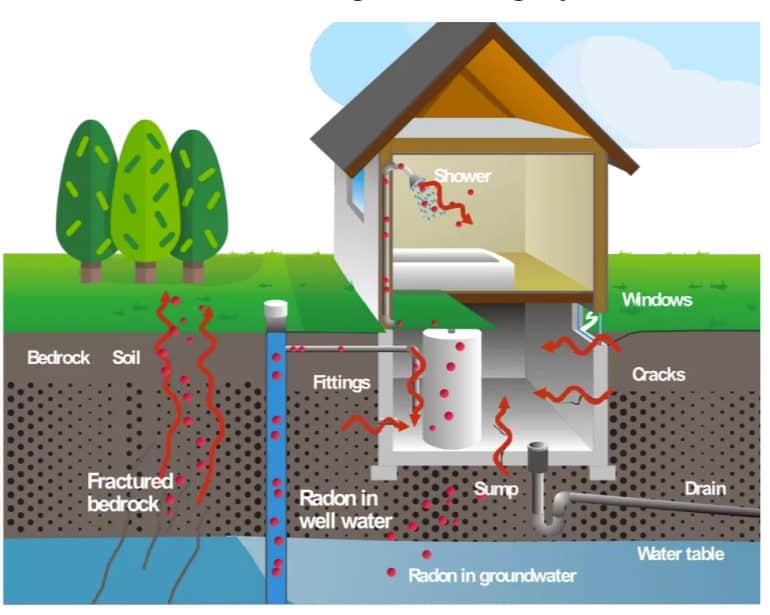
Prioritizing Radon Testing:
Given the prevalence of radon in rural areas, homeowners should prioritize radon testing every 6 months to ensure continuous monitoring and mitigation of this silent threat.
Additionally, regular testing for other pollutants helps maintain a comprehensive understanding of indoor air quality dynamics in rural environments.
Whether in the bustling city, the tranquil countryside, or somewhere in between, regular testing helps you to safeguard your indoor environments and prioritize the health and well-being of your families.
Indoor air quality testing frequency based on type of pollutant
Indoor air quality testing frequency varies depending on the location of your house as well as the type of pollutants present in the indoor atmosphere.
Understanding these variations is crucial for maintaining a healthy indoor environment. By planning the testing frequency according to specific pollutants such as carbon monoxide, VOCs, and mold, you can effectively address potential health risks.
Carbon Monoxide (CO):
Sources and Health Risks:
Carbon monoxide is a colorless, odorless gas produced by incomplete combustion of fossil fuels such as gas, oil, and wood. Exposure to high levels of CO can lead to symptoms ranging from headaches and dizziness to unconsciousness and death.
Testing Frequency:
Due to the acute health risks associated with carbon monoxide exposure, testing for CO should be conducted once in 8 to 10 months, especially in homes with gas appliances, fireplaces, or attached garages.
Additionally, regular maintenance of heating systems and CO detectors is essential to ensure early detection and prevention of CO buildup.
According to a study by the National Center for Biotechnology Information (NCBI) , improving indoor air quality can lead to a 20% increase in productivity.
, improving indoor air quality can lead to a 20% increase in productivity.
Carbon Dioxide (CO2):
Indoor Sources and Impacts:
Carbon dioxide is a natural component of indoor air, primarily released into the atmosphere through respiration and combustion processes.
Elevated CO2 levels can cause drowsiness, poor concentration, and impaired cognitive function, all of which can impact productivity and overall health conditions.
Testing Frequency:
While carbon dioxide itself is not typically harmful at normal indoor levels, monitoring CO2 levels can indicate inadequate ventilation.
Therefore, periodic testing for CO2 is recommended annually to assess ventilation effectiveness and prevent potential health issues associated with poor indoor air circulation.
Particulate Matter (PM2.5 and PM10):
Origins and Health Effects:
Particulate matter consists of tiny particles suspended in the air, including dust, pollen, soot, and other pollutants.
PM2.5 and PM10 refer to particles with diameters of 2.5 micrometers and 10 micrometers or less, respectively, which can penetrate deep into the lungs and pose respiratory and cardiovascular health risks.

Testing Frequency:
Given the health implications of exposure to particulate matter, testing for PM2.5 and PM10 should be conducted atleast once in 6 months, especially in areas with high outdoor pollution levels or indoor sources such as smoking, cooking, and cleaning activities.
Regular vacuuming and air purifiers can help mitigate particulate matter indoors.
Volatile Organic Compounds (VOCs):
Sources and Health Risks:
Volatile organic compounds are emitted as gases from various household products and building materials, including paints, cleaning agents, and furniture.
Prolonged exposure to VOCs can cause respiratory irritation, headaches, and exacerbate existing health conditions.
Testing Frequency:
Due to the prevalence of VOCs in indoor environments and their potential health effects, testing for VOCs is recommended every 6 months, especially in newly constructed or renovated homes.
Adequate ventilation and the use of low-VOC products can help minimize VOC levels indoors.
Formaldehyde:
Common Sources and Health Concerns:
Formaldehyde is a colorless gas found in building materials, furniture, and household products such as adhesives and plastics. Prolonged exposure to formaldehyde can irritate the eyes, nose, and throat, and may cause respiratory and allergic reactions.
is a colorless gas found in building materials, furniture, and household products such as adhesives and plastics. Prolonged exposure to formaldehyde can irritate the eyes, nose, and throat, and may cause respiratory and allergic reactions.
Testing Frequency:
Given its widespread use in indoor materials and furnishings, testing for formaldehyde should be conducted annually, particularly in newly constructed or furnished homes. Proper ventilation and the selection of formaldehyde-free products can help reduce exposure.
Ozone (O3):
Sources and Health Impacts:
Ozone is a reactive gas formed by the interaction of sunlight with pollutants such as nitrogen oxides (NOx) and volatile organic compounds (VOCs).
While ozone in the upper atmosphere protects against ultraviolet radiation, ground-level ozone can irritate the respiratory system and worsen asthma and other respiratory conditions.
Testing Frequency:
Testing for ozone indoors is less common, as ground-level ozone is typically an outdoor pollutant.
However, in areas with high outdoor ozone levels or indoor sources such as air purifiers or ozone-generating devices, testing may be warranted annually to assess potential health risks.
Radon:
Origin and Health Risks:
Radon is a radioactive gas formed from the decay of uranium in soil and rock, which can seep into buildings through cracks in the foundation. Prolonged exposure to radon increases the risk of lung cancer, making it a significant indoor air quality concern.
Testing Frequency:
Radon testing should be conducted every 2 years, as recommended by the Environmental Protection Agency (EPA) , regardless of the type of home or geographical location.
, regardless of the type of home or geographical location.
Homes with basements or lower levels are particularly susceptible to radon buildup and should be tested at least once in 6 months.
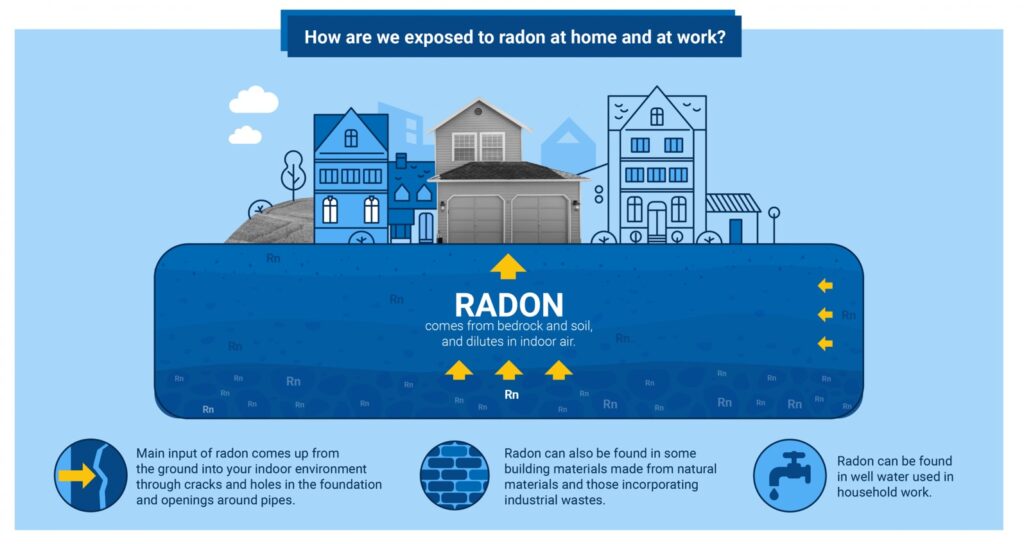
Humidity:
Effects on Indoor Comfort and Health:
Humidity levels in indoor environments can impact comfort, health, and the growth of mold and mildew.
High humidity can promote mold growth and exacerbate respiratory issues, while low humidity can cause dry skin, respiratory irritation, and static electricity buildup.
Testing Frequency:
Monitoring humidity levels is crucial year-round, with testing recommended every 6 months to ensure optimal indoor comfort and prevent moisture-related issues.
Using dehumidifiers and maintaining proper ventilation can help control humidity levels indoors.
Mold:
Growth Conditions and Health Effects:
Mold thrives in damp, humid environments and can proliferate on various surfaces, including walls, ceilings, and organic materials. Exposure to mold spores can trigger allergic reactions, asthma attacks, and respiratory infections.
Testing Frequency:
Testing for mold should be conducted annually, especially in areas prone to moisture buildup or previous water damage.
Early detection and remediation of mold growth are essential for maintaining a healthy indoor environment and preventing further contamination.
How much do indoor air quality tests cost?
The cost of indoor air quality testing varies depending on factors like the number of pollutants tested for, property size, location, and methods used. Basic testing typically ranges from $200 to $500, while comprehensive testing may exceed $1000.
The cost of indoor air quality testing varies significantly based on factors such as building size, location, type of pollutants being tested for, and other variables.
After calling 15 different IAQ testing providers across different states in the US, I have compiled an average cost table for testing indoor air pollutants.
| Test Type | Pollutants Covered | Cost Estimate (USD) | Certifications |
|---|---|---|---|
| Comprehensive Indoor Air Quality | PM2.5, PM10, VOCs, CO2, CO, formaldehyde, humidity | $200 - $600 | Indoor Air Quality Association (IAQA) |
| Radon Testing | Radon gas | $150 - $400 | National Radon Safety Board (NRSB) |
| Ventilation System Inspection | Mold, pollen, dust mites, VOCs, CO2, humidity | $150 - $300 | North American Technician Excellence (NATE) and Building Performance Institute (BPI) |
| Basic Air Quality Check | PM2.5, VOCs, CO2, CO | $100 - $250 | No specific certification |
Estimated Cost of Indoor Air Quality Testing based on Locations.
Locations
In urban areas, the comprehensive indoor air quality test typically ranges from $200 to $600. This test covers a wide range of pollutants such as PM2.5, VOCs, CO2, CO, formaldehyde, and humidity, providing a detailed analysis of indoor air quality.
Additionally, ventilation system inspections in urban cities can cost between $150 to $300, offering evaluations of ventilation system condition and performance.
Basic air quality checks are also available, costing around $100 to $250, which provide a fundamental assessment of indoor air quality.
Semi-urban areas typically offer a similar range of services and costs as urban areas, with comprehensive indoor air quality tests ranging from $200 to $400 and basic air quality checks ranging from $100 to $150.
In rural areas, comprehensive indoor air quality tests may cost slightly higher, ranging from $250 to $650.
These tests often include radon testing, which measures levels of radioactive radon gas in indoor air and typically costs between $150 to $400.
Basic air quality checks in rural areas are similar to urban areas, ranging from $100 to $200.
Services Covered:
Comprehensive indoor air quality tests provide a thorough analysis of various pollutants present in indoor environments, including PM2.5, PM10, VOCs, CO2, CO, formaldehyde, and humidity.
Radon testing specifically focuses on measuring levels of radon gas, while ventilation system inspections evaluate the condition and performance of HVAC systems.
Basic air quality checks offer a simplified assessment of indoor air quality, typically focusing on PM2.5, VOCs, CO2, and CO.
Certifications:
While there may not be specific certificates for comprehensive indoor air quality tests, testing companies most of the time are accredited by organizations like the American Industrial Hygiene Association (AIHA) or the Indoor Air Quality Association (IAQA)
or the Indoor Air Quality Association (IAQA) .
.
For radon testing, companies may be certified by the National Radon Proficiency Program (NRPP)  or the National Radon Safety Board (NRSB)
or the National Radon Safety Board (NRSB) .
.
HVAC technicians conducting ventilation system inspections may hold certifications from organizations like North American Technician Excellence (NATE) or Building Performance Institute (BPI).
or Building Performance Institute (BPI).
| Location | Test Type | Cost Estimate (USD) |
|---|---|---|
| Urban Areas | Comprehensive Indoor Air Quality Test | $200 - $600 |
| Ventilation System Inspection | $150 - $300 | |
| Basic Air Quality Check | $100 - $250 | |
| Rural Areas | Comprehensive Indoor Air Quality Test | $250 - $700 |
| Radon Testing | $150 - $400 | |
| Basic Air Quality Check | $100 - $300 | |
| Semi-Urban Areas | Comprehensive Indoor Air Quality Test | $200 - $600 |
| Basic Air Quality Check | $100 - $250 |
Factors to Consider for Frequency of Monitoring Indoor Air Quality
Occupancy and Activities
Occupancy Levels: The frequency of indoor air quality monitoring should be adjusted based on the occupancy levels of the space.
High-traffic areas such as offices, schools, and commercial buildings with a large number of occupants may require more frequent monitoring to ensure that indoor air quality remains within acceptable levels.
Conversely, residential spaces with fewer occupants may require less frequent monitoring.
Activity Levels: The types of activities conducted within a space can significantly impact indoor air quality. Activities such as cooking, cleaning, painting, or renovation work can release pollutants into the air, leading to temporary spikes in pollutant levels.
In such cases, more frequent monitoring may be necessary to promptly identify and address indoor air quality issues arising from specific activities.
Occupational Hazards: Certain occupations or industries may involve the use of chemicals or processes that can affect indoor air quality.
Facilities such as laboratories, manufacturing plants, or healthcare settings may require continuous monitoring to ensure the safety and well-being of workers and occupants.
In these environments, regular monitoring schedules should be established to assess potential occupational hazards and mitigate risks accordingly.
Occupancy Patterns: Consideration should be given to occupancy patterns within a space, including peak occupancy hours and fluctuating occupancy levels throughout the day.
Monitoring schedules should be adjusted to coincide with periods of higher occupancy or increased activity to capture variations in indoor air quality levels accurately.
Specific Events or Activities: Special events or activities that deviate from typical usage patterns may warrant additional monitoring.
For example, events involving large gatherings, indoor smoking, or extensive use of cleaning chemicals may require heightened vigilance to ensure that indoor air quality remains optimal during and after the event.
Regular monitoring helps identify potential sources of indoor air pollution, track changes over time, and implement corrective measures to maintain a healthy indoor environment for occupants.
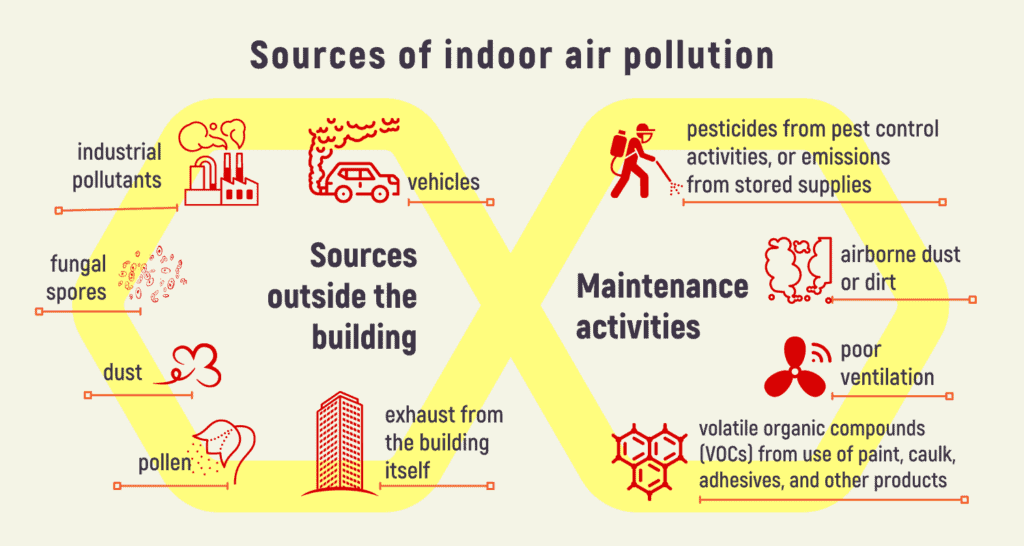
Building Age and Construction:
Age of the Building: The age of a building can impact indoor air quality due to factors such as outdated ventilation systems, deteriorating building materials, and accumulation of indoor pollutants over time.
Older buildings may have ventilation systems that are less efficient at circulating fresh air and removing indoor pollutants.
As a result, indoor air quality in older buildings may deteriorate more rapidly, necessitating more frequent monitoring to identify potential issues and implement corrective measures.
Building Materials: The materials used in construction can also influence indoor air quality. Older buildings may contain materials such as asbestos, lead-based paint, or formaldehyde-containing insulation, which can release harmful pollutants into the air as they degrade over time.
Similarly, newly constructed or renovated buildings may emit volatile organic compounds (VOCs) from fresh paint, carpets, adhesives, and other building materials.
More frequent monitoring may be necessary during the initial occupancy period to assess the impact of these materials on indoor air quality and ensure that pollutant levels remain within acceptable limits.
Construction Practices: The construction practices employed during building construction or renovation can affect indoor air quality.
Poorly executed construction practices, such as inadequate sealing of building envelopes, improper installation of HVAC systems, or use of substandard building materials, can result in air leakage, moisture intrusion, and indoor air quality issues.
Regular monitoring is essential to detect any deficiencies in construction practices and address them promptly to prevent indoor air quality problems.
is essential to detect any deficiencies in construction practices and address them promptly to prevent indoor air quality problems.
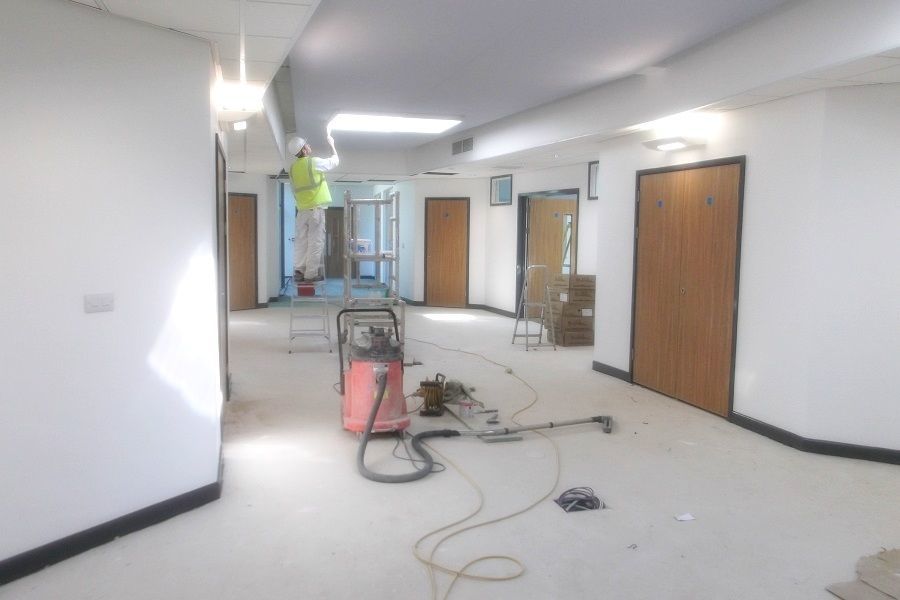
Occupancy Adjustment Period: Newly constructed or renovated buildings may undergo an adjustment period during which indoor air quality levels fluctuate as occupants settle in and building materials off-gas.
This period may require more frequent monitoring to assess indoor air quality changes and ensure that occupants are not exposed to elevated pollutant levels during the adjustment phase.
Building Maintenance: Proper maintenance of building systems and components is crucial for preserving indoor air quality.
Regular inspection and maintenance of ventilation systems, air filters, building envelopes, and building materials can help prevent indoor air quality issues associated with aging buildings.
Monitoring schedules should be adjusted to coincide with scheduled maintenance activities to assess the effectiveness of maintenance efforts and identify any emerging issues.
Geographic Location and Environmental Factors
Climate and Outdoor Air Quality: The geographic location of a building plays a significant role in determining indoor air quality, as it influences outdoor air quality and climatic conditions.
Buildings located in urban areas with high levels of outdoor pollution may experience greater infiltration of pollutants into indoor spaces.
Similarly, buildings situated near industrial facilities, major highways, or construction sites may be exposed to elevated levels of particulate matter, nitrogen dioxide, and other pollutants from outdoor sources.
In such cases, more frequent monitoring is necessary to assess the effectiveness of indoor air filtration systems and purification measures in mitigating outdoor air pollution.

Wildfires and Environmental Disasters: Buildings located in regions prone to wildfires, industrial accidents, or environmental disasters may experience sudden spikes in indoor air pollution during such events.
Wildfires, for example, can release large quantities of smoke, ash, and particulate matter into the air, which can infiltrate indoor spaces and pose health risks to occupants.
In these situations, heightened monitoring is essential to assess indoor air quality changes and implement protective measures, such as sealing windows and doors, using air purifiers, or evacuating the building if necessary.
Pollen Season and Allergens: Environmental factors such as pollen season can impact indoor air quality, particularly for individuals with allergies or respiratory conditions.
can impact indoor air quality, particularly for individuals with allergies or respiratory conditions.
Buildings located in areas with high pollen counts may experience increased levels of indoor allergens, triggering allergic reactions and respiratory symptoms in sensitive individuals.
More frequent monitoring during pollen season allows for early detection of indoor allergen levels and implementation of measures to minimize exposure, such as using air purifiers with HEPA filters and keeping windows closed.
and keeping windows closed.
Seasonal Variations: Seasonal variations in weather patterns and outdoor air quality can affect indoor air quality levels.
For example, buildings in regions with cold winters may experience indoor air quality issues associated with heating systems, such as dry air and increased levels of indoor pollutants from combustion processes.
In contrast, buildings in hot and humid climates may face challenges related to mold growth and indoor humidity levels.
Adjusting monitoring frequencies to account for seasonal variations helps ensure that indoor air quality is adequately managed throughout the year.
Proximity to Environmental Hazards: Buildings located near environmental hazards such as landfills, agricultural operations, or industrial facilities may be exposed to additional sources of indoor air pollution.
Contaminants such as methane, ammonia, pesticides, and industrial emissions can infiltrate indoor spaces and pose health risks to occupants.
More frequent monitoring is necessary to assess the impact of nearby environmental hazards on indoor air quality and implement appropriate mitigation measures to protect occupant health.
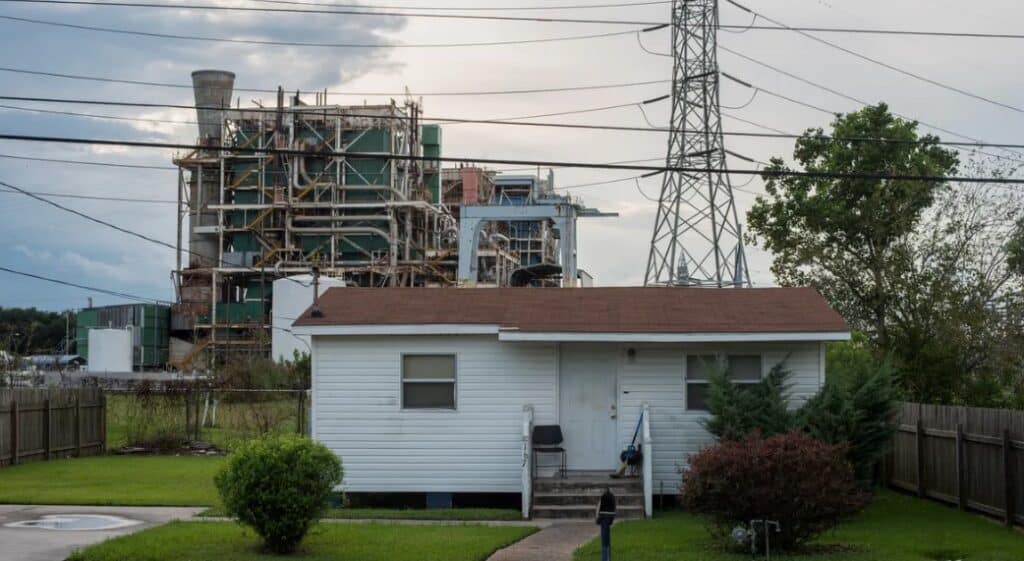
Health Concerns and Vulnerable Populations
Pre-existing Health Conditions: Individuals with pre-existing health conditions, such as asthma, chronic obstructive pulmonary disease (COPD), cardiovascular disease, or allergies, are more vulnerable to the effects of poor indoor air quality.
Exposure to indoor air pollutants can exacerbate existing health conditions and increase the risk of respiratory symptoms, cardiovascular events, and other adverse health outcomes.
Therefore, buildings housing individuals with pre-existing health conditions may require more frequent monitoring to ensure their health and well-being.
Children: Children are particularly vulnerable to the effects of indoor air pollution due to their developing respiratory and immune systems.
Exposure to indoor pollutants such as particulate matter, volatile organic compounds (VOCs), and allergens can have long-lasting effects on children’s health, leading to respiratory infections, asthma exacerbations, cognitive impairments, and developmental issues.
Buildings housing children, such as schools, daycare centers, and pediatric healthcare facilities, should undergo regular monitoring to safeguard their health and safety.

Elderly Population: The elderly population is at increased risk of adverse health effects from indoor air pollution due to age-related vulnerabilities and underlying health conditions.
Poor indoor air quality can exacerbate respiratory ailments, cardiovascular diseases, and cognitive impairments in elderly individuals, leading to reduced quality of life and increased healthcare utilization.
Buildings housing elderly populations, such as assisted living facilities, nursing homes, and senior centers, may require more frequent monitoring to protect the health and well-being of residents.
Immunocompromised Individuals: Individuals with compromised immune systems, such as those undergoing cancer treatment, organ transplantation, or living with HIV/AIDS, are particularly susceptible to the health effects of indoor air pollutants.
Poor indoor air quality can increase the risk of respiratory infections, opportunistic illnesses, and complications in immunocompromised individuals, posing serious health risks.
Buildings accommodating immunocompromised individuals, such as hospitals, clinics, and long-term care facilities, should prioritize indoor air quality monitoring to minimize health risks and ensure patient safety.
Occupational Exposure: Workplaces with occupational exposure to specific pollutants or hazardous substances may require regular monitoring to comply with occupational health and safety regulations.
Industries such as manufacturing, construction, agriculture, healthcare, and laboratories may expose workers to airborne contaminants such as dust, chemicals, biological agents, and fumes, which can pose health risks if not properly monitored and controlled.
Implementing workplace air quality monitoring programs helps identify occupational hazards, assess exposure levels, and protect worker health through appropriate control measures and interventions.

Regulatory Requirements and Guidelines:
Occupational Safety and Health Administration (OSHA): OSHA establishes regulations and standards to ensure safe and healthy working conditions in the United States.
While OSHA does not have specific regulations governing indoor air quality monitoring, it does require employers to provide a workplace free from recognized hazards, including indoor air pollution.
does not have specific regulations governing indoor air quality monitoring, it does require employers to provide a workplace free from recognized hazards, including indoor air pollution.
OSHA may refer to guidelines or recommendations from organizations such as the American Conference of Governmental Industrial Hygienists (ACGIH) for assessing indoor air quality in occupational settings.
for assessing indoor air quality in occupational settings.
Environmental Protection Agency (EPA): The EPA provides guidance and resources on indoor air quality management through programs such as the Indoor Air Quality Tools for Schools (IAQ Tools for Schools) and the Indoor Air Quality (IAQ) Design Tools for Schools.
provides guidance and resources on indoor air quality management through programs such as the Indoor Air Quality Tools for Schools (IAQ Tools for Schools) and the Indoor Air Quality (IAQ) Design Tools for Schools.
While the EPA does not mandate indoor air quality monitoring, it offers recommendations and best practices for maintaining healthy indoor environments in various settings, including schools, homes, offices, and healthcare facilities.
ASHRAE Standards: The American Society of Heating, Refrigerating and Air-Conditioning Engineers (ASHRAE) publishes standards and guidelines for indoor air quality, ventilation, and HVAC system design.
ASHRAE Standard 62.1, Ventilation for Acceptable Indoor Air Quality, guides ventilation rates and indoor air quality parameters for different occupancy types.
Standard 62.1, Ventilation for Acceptable Indoor Air Quality, guides ventilation rates and indoor air quality parameters for different occupancy types.
Building owners and designers may refer to ASHRAE standards when designing or retrofitting HVAC systems to ensure compliance with indoor air quality requirements.
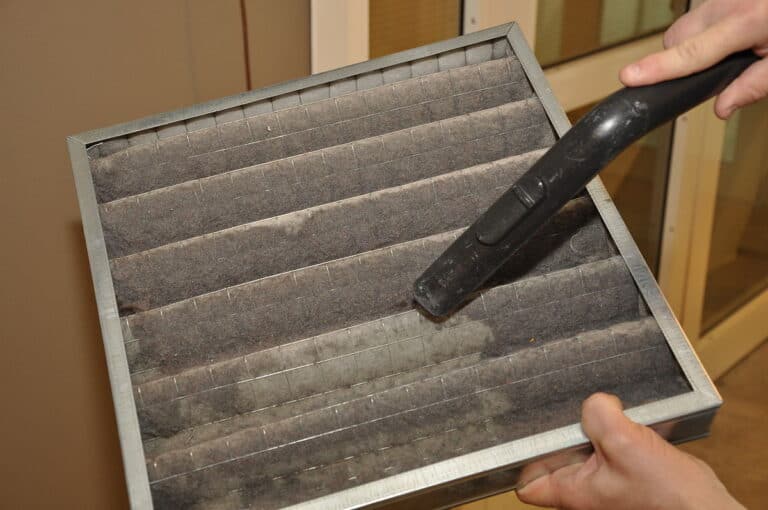
Occupational Exposure Limits (OELs): Regulatory agencies may establish occupational exposure limits (OELs) for specific airborne contaminants to protect workers from exposure-related health risks.
OELs specify the maximum allowable concentrations of pollutants in workplace air over a specified time period. Employers are responsible for monitoring airborne concentrations of hazardous substances and ensuring that workers are not exposed above OELs.
specify the maximum allowable concentrations of pollutants in workplace air over a specified time period. Employers are responsible for monitoring airborne concentrations of hazardous substances and ensuring that workers are not exposed above OELs.
Local Building Codes: Local building codes and regulations may include provisions related to indoor air quality monitoring in certain types of buildings or occupancies.
Building owners and facility managers should consult local authorities and building code requirements to ensure compliance with applicable regulations.
Health Organization Guidelines: Health organizations such as the World Health Organization (WHO) and the Centers for Disease Control and Prevention (CDC)
and the Centers for Disease Control and Prevention (CDC)  may publish guidelines or recommendations for indoor air quality management in various settings, including healthcare facilities, schools, and homes.
may publish guidelines or recommendations for indoor air quality management in various settings, including healthcare facilities, schools, and homes.
These guidelines provide evidence-based strategies for assessing and improving indoor air quality to protect public health.
Different Types of Indoor Air Quality Testing
Particulate Matter (PM) Testing:
Particulate matter testing measures the concentration of airborne particles in indoor air.
in indoor air.
PM can originate from sources such as dust, pollen, smoke, and vehicle emissions and can vary in size from coarse particles (PM10) to fine particles (PM2.5) and ultrafine particles (PM0.1).
High levels of PM can exacerbate respiratory conditions and contribute to cardiovascular problems.
PM testing is typically conducted using air sampling devices equipped with filters or optical sensors to measure particle concentrations.
Volatile Organic Compound (VOC) Testing:
Volatile organic compounds (VOCs) are a diverse group of chemicals that can off-gas from various sources such as building materials, furniture, cleaning products, and indoor activities.
VOCs can have short-term and long-term health effects, including eye and respiratory irritation, headaches, and organ damage.
can have short-term and long-term health effects, including eye and respiratory irritation, headaches, and organ damage.
VOC testing involves collecting air samples and analyzing them for the presence and concentration of specific VOCs using techniques such as gas chromatography-mass spectrometry (GC-MS) or photoionization detection (PID).
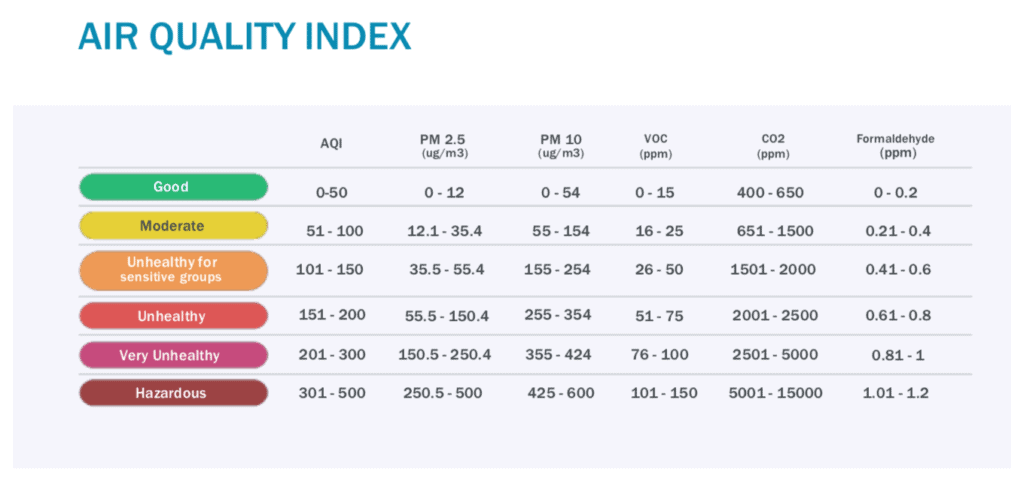
Carbon Dioxide (CO2) Monitoring:
Carbon dioxide (CO2) monitoring is essential for assessing indoor air ventilation and occupancy levels.
Elevated CO2 levels can indicate inadequate ventilation, leading to poor indoor air quality and discomfort.
CO2 monitoring devices measure CO2 concentrations in indoor air and provide real-time data on ventilation effectiveness.
These devices are commonly used in schools, offices, and commercial buildings to optimize ventilation systems and ensure indoor air quality.
Formaldehyde Testing:
Formaldehyde is a colorless and highly reactive gas commonly found in indoor air as a result of off-gassing from building materials, furniture, and consumer products.
is a colorless and highly reactive gas commonly found in indoor air as a result of off-gassing from building materials, furniture, and consumer products.
Exposure to formaldehyde can cause respiratory irritation, allergic reactions, and long-term health effects such as cancer.
Formaldehyde testing involves collecting air samples and analyzing them for formaldehyde concentrations using methods such as colorimetric tubes or analytical instruments such as spectrophotometers.
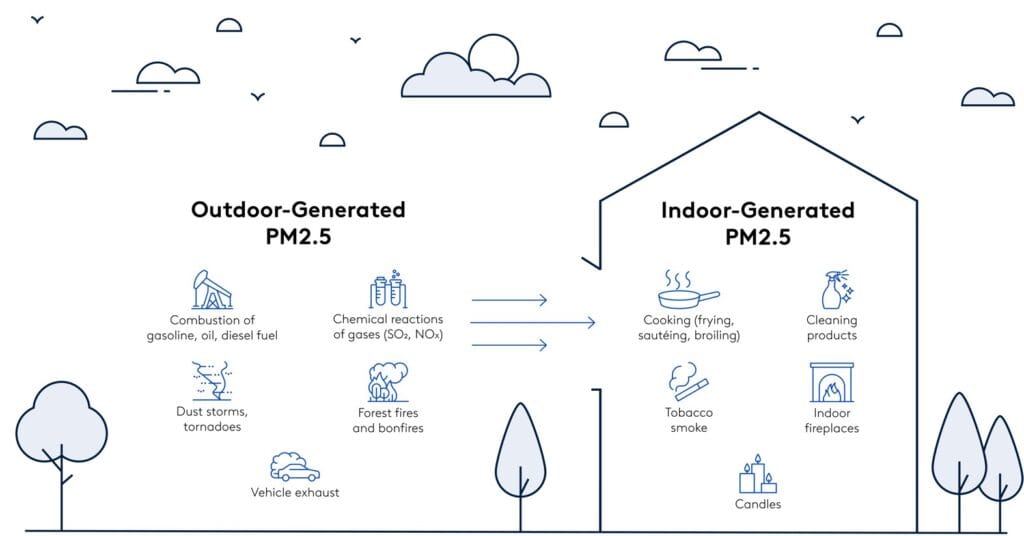
Mold and Allergen Testing:
Mold and allergen testing is crucial for identifying indoor air quality issues related to microbial contamination.
Mold spores, pollen, and other allergens can trigger allergic reactions, asthma attacks, and respiratory infections.
Mold testing involves collecting air samples or surface swabs and analyzing them for the presence of mold spores and allergens.
Testing methods may include microscopy, culturing, or molecular techniques such as polymerase chain reaction (PCR).
FAQs
Are home air quality tests worth it?
Home air quality tests can be worth it, especially if you have concerns about indoor air pollutants or if occupants are experiencing health issues related to poor air quality.
Testing can help identify specific pollutants, such as mold spores, volatile organic compounds (VOCs), radon, or particulate matter, and provide actionable insights to improve indoor air quality.
Additionally, conducting regular air quality tests can help prevent potential health problems and ensure a healthier living environment for you and your family.
What are the signs of poor indoor air quality?
Signs of poor indoor air quality may include unpleasant odors, stuffy or stale air, visible mold growth, excessive dust accumulation, respiratory symptoms such as coughing or wheezing, and allergic reactions such as sneezing or watery eyes.
If occupants experience these symptoms, it may indicate the need for indoor air quality testing and remediation measures.
How accurate are home air quality tests?
The accuracy of home air quality tests can vary depending on factors such as the quality of the testing kit, the specific pollutants being measured, and the testing methods used.
While some home test kits can provide reliable results for certain pollutants like radon or VOCs, others may have limitations or less accuracy compared to professional-grade equipment used by environmental consultants or laboratories.
It’s essential to follow the instructions carefully and choose reputable test kits to obtain the most accurate results possible.
Conclusion
In conclusion, the frequency of indoor air quality monitoring should be determined based on various factors such as occupancy, building age, geographic location, health concerns, and regulatory requirements.
Regular indoor air quality testing is essential for maintaining healthy indoor environments and preventing potential health hazards associated with indoor air pollution.
By understanding the different types of indoor air quality testing available, individuals and organizations can take proactive measures to ensure cleaner, safer, and more comfortable indoor spaces for everyone.

